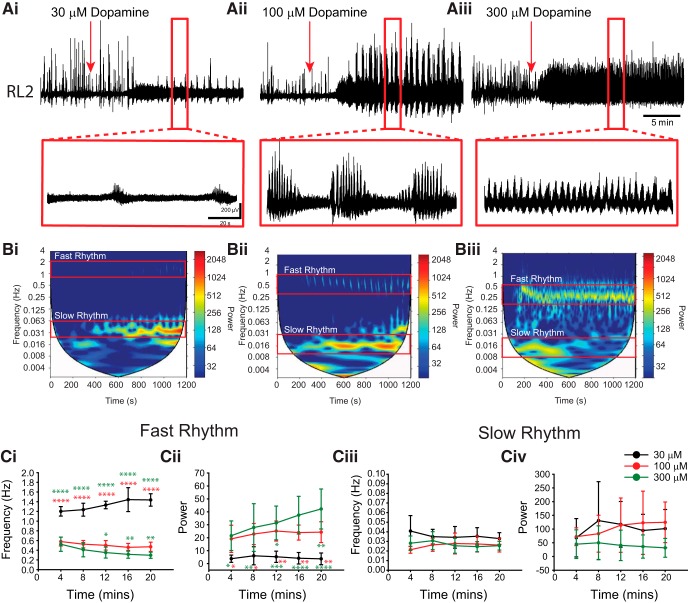Figure 2.
High concentrations of dopamine evoke rhythmicity. Ai–Aiii, Neurograms from single L2 ventral roots from individual experiments with dopamine (DA) bath applied (red arrows) at 30 µm (Ai), 100 µm (Aii), and 300 µm (Aiii) to naive preparations evoke rhythmic motor activity. Bi–Biii, The fast and slow rhythms are illustrated in the autowavelet frequency power spectrograms over time with frequency on the left y-axis, time on the x-axis, and warmer colors representing higher power. Rhythm frequency and power of the fast and slow rhythms were analyzed by selecting regions of interest selected within bouts of the fast rhythm and within the range of the slow rhythm. Ci, Cii, The frequency of the fast rhythm slowed down (Ci) and power increased (Cii) with dopamine concentration. Ciii, Civ, No differences were found in frequency (Ciii) or power (Civ) of the slow rhythm between dopamine concentrations. Data are presented as the mean ± SD, with asterisks denoting significance (*p < 0.05, **p < 0.01, ***p < 0.001) with Tukey post hoc test following a two-way ANOVA between time (5 min bins) and dopamine concentration.

